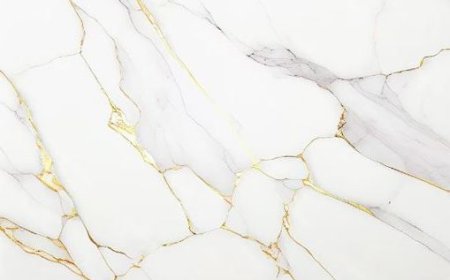Understanding the Oriental Cockroach: A Complete Guide
The Oriental cockroach, also known as Blatta orientalis, is one of the most common pest species found in homes and commercial properties across the world. Sometimes referred to as "water bugs" or "black beetle cockroaches" due to their dark color and preference for damp areas, these insects are a serious nuisance and a potential health risk.
Unlike the more agile and fast-moving German or American cockroaches, Oriental cockroach are slower but highly resilient. They thrive in cool, moist environments and are often found in basements, drains, crawl spaces, and other dark, damp areas.
Physical Characteristics of the Oriental Cockroach
Size and Appearance
Oriental cockroaches are relatively large, measuring about 1 to 1.25 inches in length. They are typically dark brown to black in color and have a shiny, smooth appearance. Males have wings that cover about three-quarters of their abdomen, while females have only tiny, non-functional wing pads. Neither sex is capable of flight.
Behavior and Movement
These cockroaches move slower than other common species and are less likely to be seen running rapidly when lights are turned on. They are primarily nocturnal and tend to stay hidden during the day. Oriental cockroaches are known for their tendency to remain near ground level and rarely climb smooth surfaces.
Habitat and Living Conditions
Preferred Environments
Oriental cockroaches prefer environments with high humidity and low light. They are commonly found in sewers, damp basements, under sinks, around leaky pipes, and inside crawl spaces. Outdoors, they can be found under mulch, leaves, stones, or in moist, shaded areas near buildings.
Because they cannot survive in dry conditions for extended periods, they usually migrate indoors during hot and dry summer months in search of moisture.
Entry Into Homes
Oriental cockroaches typically enter buildings through cracks in foundations, gaps around doors or windows, and sewer openings. They may also be brought inside through infested packages, laundry, or items stored in damp areas.
Diet and Feeding Habits
Oriental cockroaches are scavengers and feed on a wide range of organic matter. They are especially attracted to decaying food, garbage, and pet waste. Their diet can also include crumbs, grease, paper products, and other debris. This non-discriminatory feeding behavior makes them a particular concern when it comes to food safety and hygiene.
Their tendency to frequent unsanitary areas such as trash bins, drains, and sewers means they can pick up bacteria, viruses, and parasites on their bodies and legs, which they then spread to food and surfaces.
Health Risks and Concerns
Allergies and Asthma
Oriental cockroaches, like other species, produce allergens that can trigger allergic reactions and asthma in sensitive individuals. Their shed skin, droppings, and saliva contain proteins known to provoke allergic symptoms.
Disease Transmission
Though they do not directly bite or sting, Oriental cockroaches are vectors for disease. They can spread bacteria such as E. coli, Salmonella, and Staphylococcus by contaminating surfaces, food, and utensils. This can result in food poisoning, diarrhea, dysentery, and other gastrointestinal issues.
Signs of an Oriental Cockroach Infestation
Sightings
The most obvious sign of an infestation is seeing live cockroaches, particularly at night. Oriental cockroaches are less likely to be seen during the day unless the infestation is severe or they are disturbed.
Droppings and Odor
Oriental cockroach droppings resemble small, dark, cylindrical pellets and may be found in areas where they hide or travel. Another common sign is a strong, musty odor. This scent is more pronounced with larger infestations and comes from chemicals produced by the insects.
Egg Cases (Oothecae)
Females produce capsule-like egg cases called oothecae, which contain up to 16 eggs. These egg cases are usually dark brown and can be found in hidden crevices, behind appliances, or in other undisturbed areas.
Preventing an Oriental Cockroach Infestation
Eliminate Moisture
Since Oriental cockroaches need moisture to survive, eliminating water sources is a critical first step in prevention. Fix leaking pipes, use dehumidifiers in basements, and ensure proper drainage around your home.
Seal Entry Points
Seal cracks in walls, gaps around windows and doors, and entry points near plumbing. Install weatherstripping and door sweeps to prevent cockroaches from entering the building.
Maintain Cleanliness
Keep living spaces clean, especially kitchens and bathrooms. Do not leave food out, and store pantry items in sealed containers. Dispose of garbage regularly and clean up crumbs and spills immediately.
Outdoor Maintenance
Trim vegetation away from the foundation of the building, reduce leaf litter and mulch, and ensure that firewood or debris is not stored near the home. These outdoor practices help reduce suitable habitats for Oriental cockroaches.
Treatment and Control Options
DIY Solutions
For minor infestations, you can use a combination of cockroach baits, traps, and insecticidal dust. Boric acid, diatomaceous earth, and gel baits can be effective when applied to known harborage areas. Keep in mind that cockroaches are nocturnal and will follow predictable paths between food and hiding places.
Professional Pest Control
For severe or persistent infestations, professional pest control is often necessary. Pest control experts can identify the scope of the infestation, locate hidden breeding areas, and apply targeted insecticides. They also offer long-term prevention strategies and routine inspections.
Oriental Cockroach vs. Other Species
Compared to German Cockroaches
German cockroaches are smaller, tan-colored, and reproduce more rapidly than Oriental cockroaches. While Oriental cockroaches prefer cooler, moist areas, German cockroaches thrive in warm, humid kitchens and bathrooms.
Compared to American Cockroaches
American cockroaches are larger and reddish-brown in color. They are also more likely to fly and are often found in commercial buildings, sewers, and warehouses. Oriental cockroaches are less mobile and usually remain at or below ground level.
Final Thoughts on Dealing with Oriental Cockroaches
The Oriental cockroach is a persistent pest that can quickly become a problem if not addressed early. Their preference for unsanitary areas and their potential to spread disease make them more than just a nuisancethey are a serious health concern.



































![Play99 Login & Registration Guide for Indian Users [2025 Update]](https://www.atlantanewsplus.com/uploads/images/202507/image_140x98_6870c1df7bfcd.jpg)